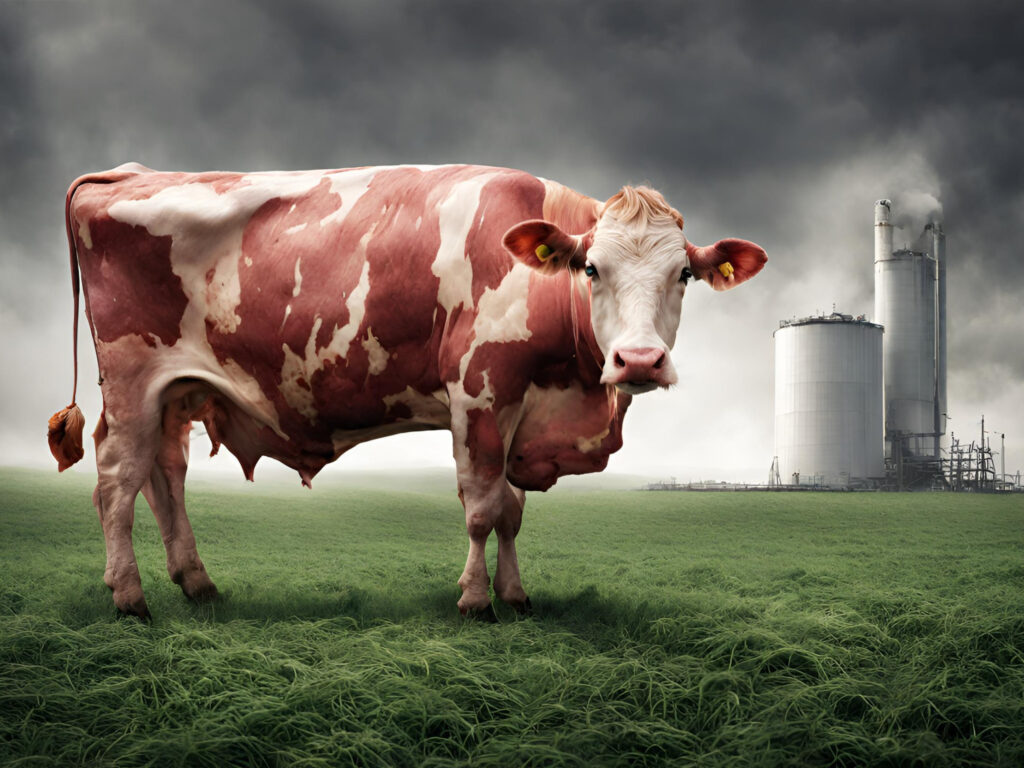Study: Livestock Agriculture Named the Leading Cause of Climate Change
4 Mins Read
Using updated greenhouse gas metrics, a new study suggests that animal agriculture is the leading cause of climate change.
As the US Department of Agriculture is hit with lawsuits from farmers over its decision to remove references to climate change on its websites, a new study provides a key argument for the plaintiffs.
For decades, environmental experts have placed fossil fuels at the top of the list of polluting industries; new analysis suggests that it’s actually agriculture that has caused the most global warming, and specifically livestock farming.
In the study, Australian climate scientist Gerard Wedderburn-Bisshop, co-founder of the World Preservation Foundation, notes that the IPCC’s greenhouse gas accounting rules were developed three decades ago – while recent advances have improved our understanding of what causes climate change.
According to his assessment, agriculture – the most extensive land user – caused 60% of global warming between 1750 and 2020, with meat and dairy farming alone responsible for 53% of the total. In contrast, fossil fuels contributed to 19% of warming in this period, less than a third of the food production sector.
“Agriculture becomes the major disruptor of five planetary boundaries: biosphere integrity, land system change, freshwater change, biogeochemical flows, and now climate change,” writes Wedderburn-Bisshop. “This emphasises the need for policies to address this sector if we are to have a liveable future.”

Using novel emissions accounting measures
Published in the peer-reviewed Environmental Research Letters journal, the research is based on three greenhouse gas accounting measures, which the author says are indicative of advancements in climate science.
The first involves the gross accounting of both fossil carbon and land-clearing carbon. The IPCC’s land use category reports net emissions, while all other sectors are reported as gross emissions. The study found that the gross emissions of land use change are 2.8 times higher than its net emissions, surpassing the amount of carbon released by fossil fuels since 1750.
“Presently, convention dictates that 100% of fossil carbon is counted but only a third of [land use change] carbon is counted (the part that remains in the atmosphere to cause warming). The inconsistency here is that carbon emissions from all sources have an equal proportion remaining in the atmosphere,” the researcher says.
This form of emissions accounting significantly boosts the value of carbon emissions from deforestation, placing fossil fuels second to land use as a pollution source.
The second measure is to use effective radiative forcing (ERF) to measure gases, which is presented as a superior alternative to the time-dependent global warming potential (GWP). “ERF is believed to produce more accurate estimates of climate impact for agriculture because conventional GWP use can distort mitigation effectiveness,” the study explains.
Finally, there’s a focus on inclusive accounting – in other words, measuring all emissions, whether heating or cooling. Wedderburn-Bisshop writes that aerosols, whose cooling effect is masked by most CO2 warming, are co-emitted with carbon from fossil fuels, but are rarely reported.
The other issue is the exclusion of past deforestation. Fossil fuel emissions overtook land use emissions in the 1960s – even though warming from deforestation before that still continues to affect the planet. Additionally, deforestation prevents future vegetation carbon storage capacity from materialising due to CO2 fertilisation.

Meat and dairy farming the greatest polluter
The study finds that agriculture has emitted an average surface temperature rise of 0.74°C since 1750, with 86% of this (or 0.64°C) caused by livestock farming.
Fossil fuels have resulted in temperature shifts of 0.21°C due to strong cooling from sulfur dioxide and nitrogen oxide aerosols. The inclusive accounting model reveals that fossil fuel warming is 0.79°C, together with 0.59°C of cooling from co-emissions. On the flip side, agriculture has caused 0.86°C warming, and only 0.13°C cooling.
The study shows that the impact of methane emissions has been seriously understated in GWP analyses, having caused 49% of warming since 1750 (and no cooling). “Animal agriculture is the greatest methane emitter, but it also offers the greatest carbon opportunity cost/drawdown potential,” it states. In addition, it provides “low-hanging fruit” opportunities for climate and biodiversity mitigation.
Wedderburn-Bisshop further highlights that despite being short-lived aerosols have masked 75% of ERF from fossil fuel warming. Efforts to reduce aerosols due to their ill health effects are effective, and threaten additional warming in the decades to come. “The prospect of decreased aerosol cooling emphasises the urgency for quitting fossil fuels and drawing down legacy carbon,” he writes.
There are several policy implications from the study’s findings. A shift away from fossil fuels is still an urgent priority, while normalising gross deforestation emissions accounting would support policies aimed at land clearing and forest preservation, since the destruction of forests of any age “could be seen in the same way as burning coal”.
Restoring degraded forests is the most effective, lowest-cost natural mitigation notion here, and combined with the carbon deficit potential of livestock agriculture, it would substantially reduce CO2 atmospheric loading.
The results will also force policymakers to look at “overwhelmingly harmful” farm subsidies – efforts to redirect these have been met with resistance. “Initiatives such as the EU Green Deal are susceptible to industry influence, and misinformed and uninformed debate has enabled harmful agricultural industries to obstruct understanding and policy,” says Wedderburn-Bisshop. “These accounting advances may usefully support policy reform.”



